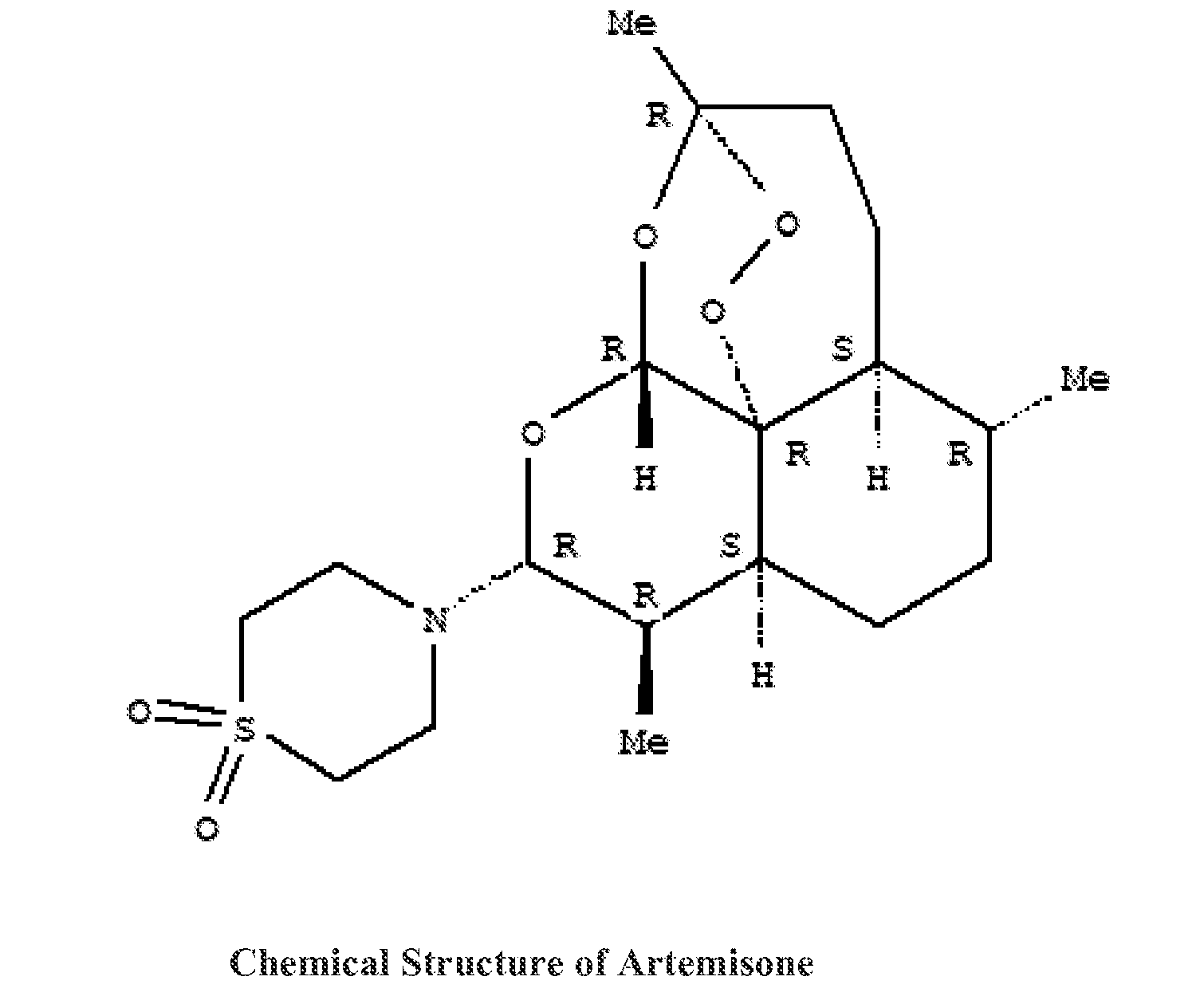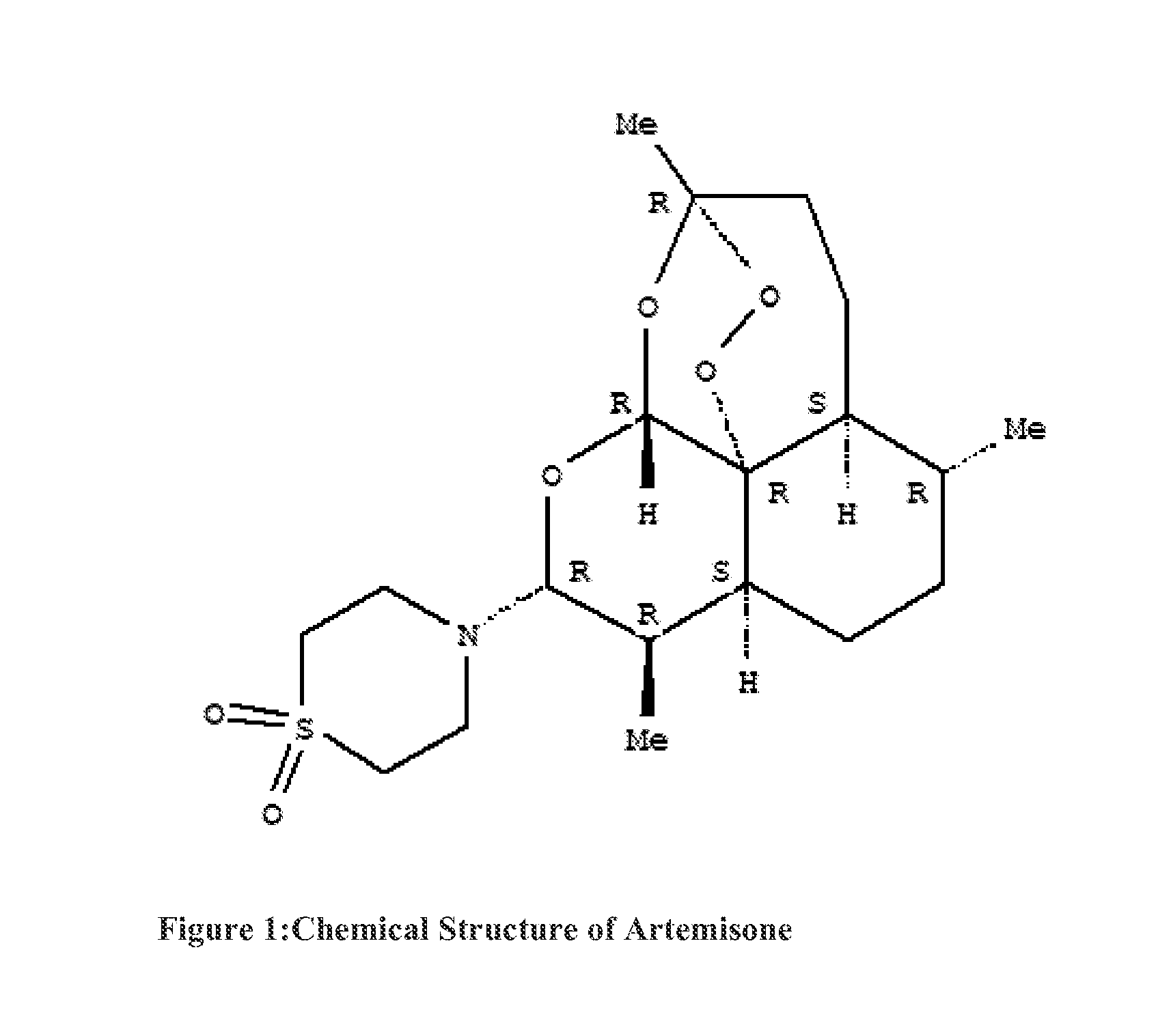Composition and Method for the Treatment of Alzheimer's Disease
a technology for alzheimer's disease and composition, applied in the field of composition and method for the can solve the problem of limited treatment of alzheimer's diseas
- Summary
- Abstract
- Description
- Claims
- Application Information
AI Technical Summary
Benefits of technology
Problems solved by technology
Method used
Image
Examples
Embodiment Construction
[0010]This invention relates to a certain extract of the Artemisia annua plant, both in their crude and refined forms, and certain refined forms of Artemisia annua plant extracts composed substantially of Artemisone FIG. 1, which is chemically classified as a sesquiterpene lactone compound containing an endo-peroxide bridge. The compound is suitable for subcutaneous, intravenous, intrathecal, intramuscular, intranasal, oral, transepidermal, parenteral, by inhalation, or intracerebroventricular application for the treatment of Alzheimer's Disease and its related dementia.
[0011]The present invention discloses a method of topical, parenteral, or oral administration of Artemisone as a refined form from the Artemisia annua plant composed substantially of Artemisone. This method can include a base, a carrier, a solvent or a delivery system.
[0012]Artemisia annua extracts have been used in ancient Chinese medicine (qinqhao) for a number of treatments. Medicinal use of the Chinese herb qinqh...
PUM
| Property | Measurement | Unit |
|---|---|---|
| Composition | aaaaa | aaaaa |
Abstract
Description
Claims
Application Information
 Login to View More
Login to View More - R&D
- Intellectual Property
- Life Sciences
- Materials
- Tech Scout
- Unparalleled Data Quality
- Higher Quality Content
- 60% Fewer Hallucinations
Browse by: Latest US Patents, China's latest patents, Technical Efficacy Thesaurus, Application Domain, Technology Topic, Popular Technical Reports.
© 2025 PatSnap. All rights reserved.Legal|Privacy policy|Modern Slavery Act Transparency Statement|Sitemap|About US| Contact US: help@patsnap.com


